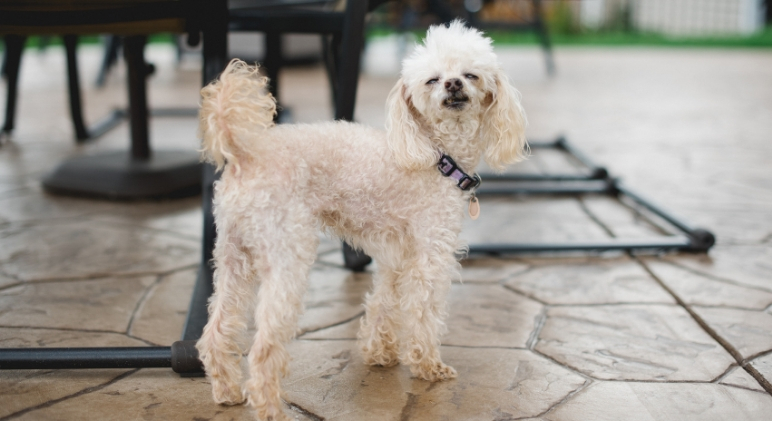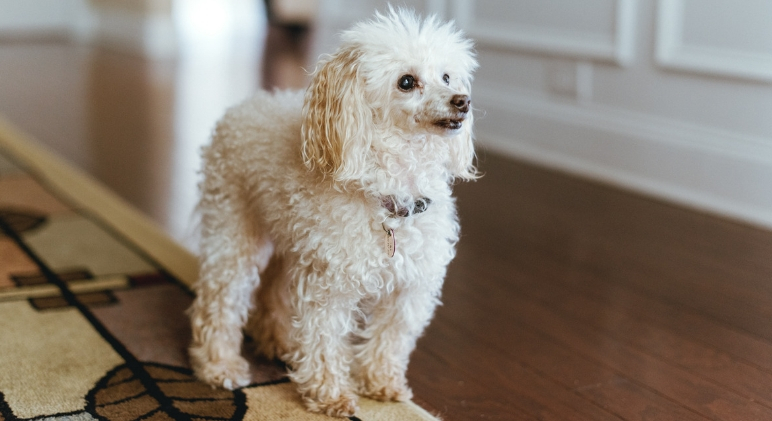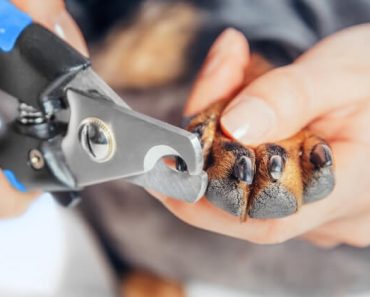Post By: Donna, Co-Founder of Proud Dog Mom
It’s a pet parent’s worst nightmare — knowing when it’s time to say goodbye. It’s with a heavy heart that I write this article today because I recently had to say goodbye to my little girl, Tina.
Tina was in congestive heart failure, a condition where the heart is unable to effectively pump blood around the body. As a result, blood backs up into the lungs and body, ultimately causing respiratory distress. Tina had been in our family for more than 14 years, and life without her is definitely a challenge. The only thing that makes it bearable? Knowing she’s no longer suffering. Thanks to our loving veterinarian, she crossed the Rainbow Bridge calmly and in peace.
What Is Euthanasia?
According to the Merriam-Webster dictionary:
“The word comes from the Greek euthanatos, which means ‘easy death.’”
And that’s exactly what Euthanasia is meant to be. When your furry family member is no longer living a quality life — whether from old age or illness — Euthanasia puts an end to the pain and suffering. It gives you and your veterinarian the ability to step in and help. It’s what many people refer to as, “putting to sleep” or “putting down.” An “easy death.”
How Do I know It’s Time?
This is a very personal question. It’ll be different for everyone. Since no one knows your fur kids better than you, observe them. Talk to your vet if you’re having concerns. He/she will examine your pup, assess the situation, and together you can figure things out. It won’t be easy, but you are ultimately the only one who can make that final decision.
For me, being a nurse, red flags started going off when I heard and saw certain things. For quite some time Tina had been suffering the challenges of senior living. She had achy joints, couldn’t run or jump anymore, lost her hearing, and slept a lot. Last week things went south.
Tina had developed an abnormal cough. Then, as she rested on my lap, I noticed her breathing had changed. She wasn’t in distress, but it was getting louder. Knowing she had heart issues, I called my vet. Tina’s little heart was failing and there was really nothing that was going to fix it. It was time.
As much as it breaks my heart not to have her by my side, I’m at peace knowing she is no longer suffering.

Before It Happens …
Your vet team will give you a thorough explanation of what to expect. If you don’t feel like they’ve explained the procedure to your satisfaction, or you don’t fully understand everything they said, ask questions. Ask as many as you need before they begin.
How Do They Do It?
- Different vets may use different protocols, but many (not all) will begin by administering a sedative shot. This offers a calming and relaxing effect.
- After the sedative has worked, they’ll proceed with the euthanasia drug. The most common euthanasia drug used is pentobarbital. Pentobarbital is the drug that will ultimately stop all brain and heart function. The drugs are normally given by IV injection into a vein in the leg, but some veterinarians will prefer to start an IV line before the process begins allowing them a ready access point.
Note: Although most vets do this in their office, there are some who will come to your home. If that’s what you feel more comfortable with then ask your vet. If they don’t offer that service they could probably refer you to a veterinarian who does.

My Experience
After my vet explained what would happen, she gave me some private time with Tina until I was ready. When I called the doctor back in, I took a deep breath, said a prayer, and we began.
The vet started an IV in Tina’s leg and then wrapped her in a beautiful blanket. I can still see her little head peeping out and looking around the room. Although she used to always get nervous at the vet’s office, oddly, this day she was so calm.
The doctor placed Tina in my arms. I talked to her, stroked her, and told her that I loved her and gave her a kiss. Then she told me she was going to flush her IV. After that, she would give her a shot to calm her and make her sleep. She explained I was going to feel her whole body relax, and I did. Although my heart was sinking, I knew Tina was not frightened or suffering at all.
After the sleepy medicine, the doctor waited a little bit and then she told me she was going to administer the euthanasia. It was very fast and all I can say is it was very humane. After it was over, I was again given private time to just sit and be with Tina.
After The Euthanasia Is Administered
The euthanasia drug works very quickly, seconds to a minute or two. In my experience, it took seconds. After death occurs, you may notice your dog letting out his last breath as the final air flows out of his lungs. He may twitch, urinate, or defecate as all the muscles in his body relax and his eyes will probably remain open. This is all normal.
What Will Happen To My Dog Afterward?
This is up to you. You have many choices.
You can decide to take your dog home with you for a private burial of your choosing or you can have your dog cremated. Most vets have a crematory that they work with that offer multiple services. You can choose from having a private cremation where your dog is cremated by himself and you get your dog’s ashes back. Or you can choose to have a community cremation where he is cremated with other dogs. With a community cremation, there is no way to get your dog’s ashes back.

My Advice
- Prepare and ask questions. Talk to your vet and thoroughly understand what is going to happen.
- Make all your decisions beforehand. Whether you want a burial or cremation, make all important decisions before the euthanasia. You will be too emotional to have to deal with that question afterward.
- Pay for all services beforehand. Then when you’re ready to leave you don’t have to be bothered.
- Make it as easy on your fur baby as you can. Bring his favorite blanket, bed, or toy. Bring him a treat that he always wanted, but was never allowed to have. My vet actually brought Tina a mini chocolate cupcake with frosting and sprinkles. Tina was so happy — she lapped it up. She could never have chocolate before, but there was certainly no harm in it that day. It’s something that makes me smile every time I think of it.
- If your fur baby wears a collar, leave it on. Keep everything as normal as you can. If you only remove his collar when it’s bath time or you’re dropping him at the groomer then taking off his collar will only make him feel like you’re about to do something he isn’t very fond of.
- Stay. Hold him, talk to him, and love him until it’s over. If you can’t be there (and some people just can’t) then get another family member to stick by your pooch.
- Cry. Don’t be too afraid or embarrassed to cry. No one is judging you. Your emotions will be all over the place during the process. It’s normal. Although you’re doing the right thing, it still hurts so bad … and your vet knows that.
- Don’t Feel Guilty. You made this decision because it was in your fur baby’s best interest — if it wasn’t then you wouldn’t have. And, remember, if it wasn’t in your fur baby’s best interest, your vet wouldn’t have done it either. So cry as much as you need to, but try not to beat yourself up with guilt!
- Grieving is normal and should be expected after any loss of a loved one. Everyone heals at their own individual pace. If you find you’re having difficulty emotionally, there are people you can turn to. Ask your vet if he/she can refer you to a bereavement group or counselor. My veterinarian hosts a bereavement group weekly to support her pet parents’ needs. Your vet may have one too.
- Don’t Forget About The Other Fur Kids At Home. This is going to be a terrible time for them too. Whether they were best friends or not, they will definitely feel the loss of their furry family member. They will more than likely look for them and be very sad too. I don’t know how, but in my experience, it’s like they always know. Give them some extra nurturing during this time too — they’re going to need it.
To Sum It Up
When we first bring a new fur baby home, we have happy thoughts of the many years ahead — and we should. But at some point, because canines don’t live nearly as long as we wish they would, we may need to know about the topic of euthanasia. Although it’s depressing and sad, it’s also a blessing that you and your vet have the freedom to be able to choose.








